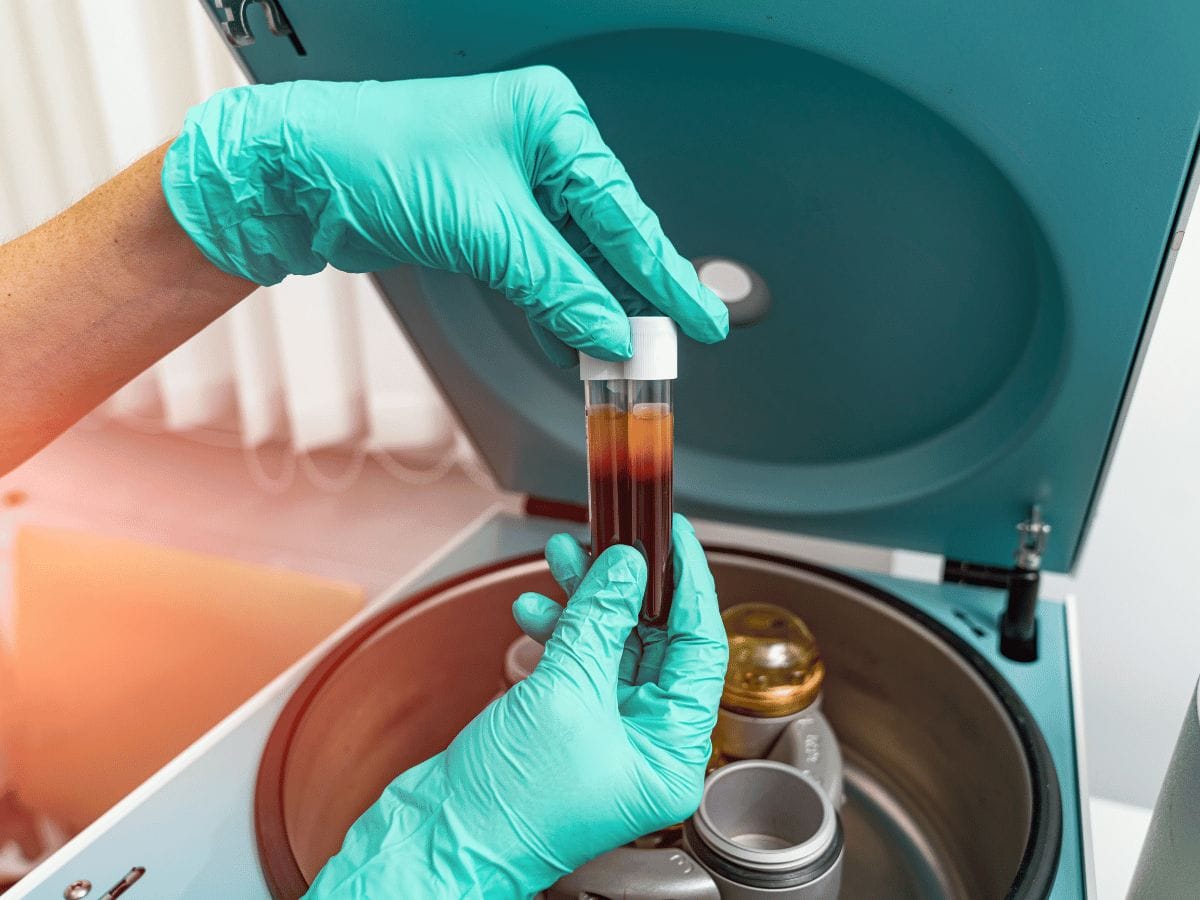
Imagine if your own blood held the secret to healing faster, naturally, and with minimal risk. That’s precisely what Platelet Rich Plasma (PRP) treatment taps into. By using a concentrated solution made from your own blood platelets, PRP supports the body in repairing damaged tissues, reducing inflammation, and even stimulating hair growth.
We’ve seen this regenerative medicine approach gain traction in orthopedics, dermatology, sports medicine, and cosmetic therapy and for good reason. PRP offers a minimally invasive, biologically backed option for relieving pain, healing injuries, and restoring function and appearance.
Platelets are best known for helping blood clot after an injury, but they also contain a powerhouse of bioactive proteins—growth factors—that aid tissue repair. These include:
When concentrated platelets are re-injected into injured tissue, they release these growth factors, which accelerate healing, reduce pain, and stimulate cellular regeneration.
Multiple peer-reviewed studies across PubMed Central and the Journal of Orthopaedic Research have detailed how these proteins help with cell signaling, collagen production, blood vessel formation, and inflammation control.
The beauty of PRP is its simplicity and the fact that it’s an autologous therapy meaning we use your own blood. Here’s a step-by-step overview:
This entire outpatient procedure typically takes about 30 to 60 minutes.
Patients dealing with osteoarthritis, rotator cuff tears, or Achilles tendon injuries can experience significant relief. PRP helps reduce inflammation and supports cartilage regeneration.
From weekend warriors to elite athletes, PRP has become a go-to recovery option for muscle strains and ligament injuries, helping individuals return to action sooner.
You might’ve heard of the “vampire facial.” That’s PRP in action: restoring youthful skin, reducing fine lines, and improving skin tone. It’s also used in PRP hair restoration therapy to combat pattern baldness by stimulating hair follicles.
Dentists use PRP to improve healing after implants or extractions. Additionally, it’s applied in chronic wound care to promote tissue regeneration where healing had otherwise stalled.
Chronic joint pain and overuse injuries can be frustrating, especially when traditional treatments fall short. Take, for example, a middle-aged runner with persistent patellar tendinopathy. After conventional therapies like rest, physical therapy, and anti-inflammatories provided limited relief, PRP injections offered measurable improvement in both pain and function within 12 weeks.
According to the American Journal of Sports Medicine, up to 70% of patients with degenerative joint conditions experience pain reduction and improved mobility post-PRP.
We’ve also seen incredible cosmetic results. In facial rejuvenation, PRP promotes collagen production, tightens sagging skin, and minimizes pores and wrinkles—entirely naturally. PRP hair restoration, often combined with microneedling, can slow thinning hair and reactivate dormant follicles, especially in early-stage androgenic alopecia.
Typical treatment protocols involve 3-4 sessions spaced about a month apart, with visible improvements often apparent by the third visit.
While PRP is generally safe, there are some possible side effects:
These typically subside within a few days. Rarely, infections or complications can occur, especially if post-treatment guidelines aren’t carefully followed.
PRP doesn’t replace surgery or corticosteroids in every case, but it may delay or reduce the need for them. Where steroids offer short-term relief, PRP addresses the root causes of pain by actually healing the damaged tissue. And while surgery often comes with tissue trauma, PRP is administered via injection, minimizing disruption.
Patients with mild to moderate osteoarthritis, for instance, may see results comparable to joint arthroscopy without the surgical recovery.
PRP is best suited for individuals with:
Not every patient is an ideal candidate. Those with platelet disorders, active infections, or certain cancers should avoid PRP treatments. It’s important that we assess each case individually.
Research is continuously evolving. Scientists are exploring optimal platelet concentrations, bioenhancers, and delivery techniques to boost PRP’s therapeutic effects. There’s a growing interest in combining PRP with stem cell therapy, particularly in cartilage regeneration and spinal disc therapy.
Institutions like the National Institutes of Health (NIH) and Mayo Clinic are actively publishing results from clinical trials uncovering new applications, everything from diabetic wound care to erectile dysfunction.
If you’re managing chronic joint pain, soft tissue injury, or even skin and hair concerns and haven’t found satisfaction with traditional treatments, PRP may offer a natural, scientifically grounded path to healing and renewal. Let’s work together to find the best solution for your health and wellness journey.
Ready to harness your body’s own healing power? Connect with us at South Florida Multispecialty Hospital and see if PRP is right for you.
PRP treatment uses a concentration of a patient's own blood platelets to accelerate healing. These platelets release growth factors that stimulate tissue repair and reduce inflammation.
A small blood sample is taken, spun in a centrifuge to isolate the platelets, and then injected into the specific area such as a joint, tendon, or skin site.
PRP is effective for osteoarthritis, tendonitis, ligament injuries, hair loss, and facial skin rejuvenation. It is also used in oral surgery and wound care.
PRP side effects are generally mild and include temporary pain, swelling, or bruising at the injection site. Serious side effects are rare, especially with proper technique.
Results become noticeable within 2 to 6 weeks depending on the condition treated, with continued improvement over several months.
Typically, 2–4 sessions spaced weeks apart are recommended. This may vary based on the condition and individual response to therapy.
Pain is usually minimal. Most patients resume normal activities within 24–48 hours, though some experience temporary soreness.
Unlike corticosteroids, which reduce inflammation without healing, PRP promotes actual tissue repair. It serves as a less invasive alternative to surgery in some cases.
Your well-being is our top priority. Reach out today to discover how our dedicated team can support your health journey.
Have questions or want to learn more? Use the form below to get started!
Connect with South Florida’s trusted multispecialty care team and take control of your health with compassion and convenience.
©2025 South Florida Multispecialty Medical Group. All Rights Reserved.